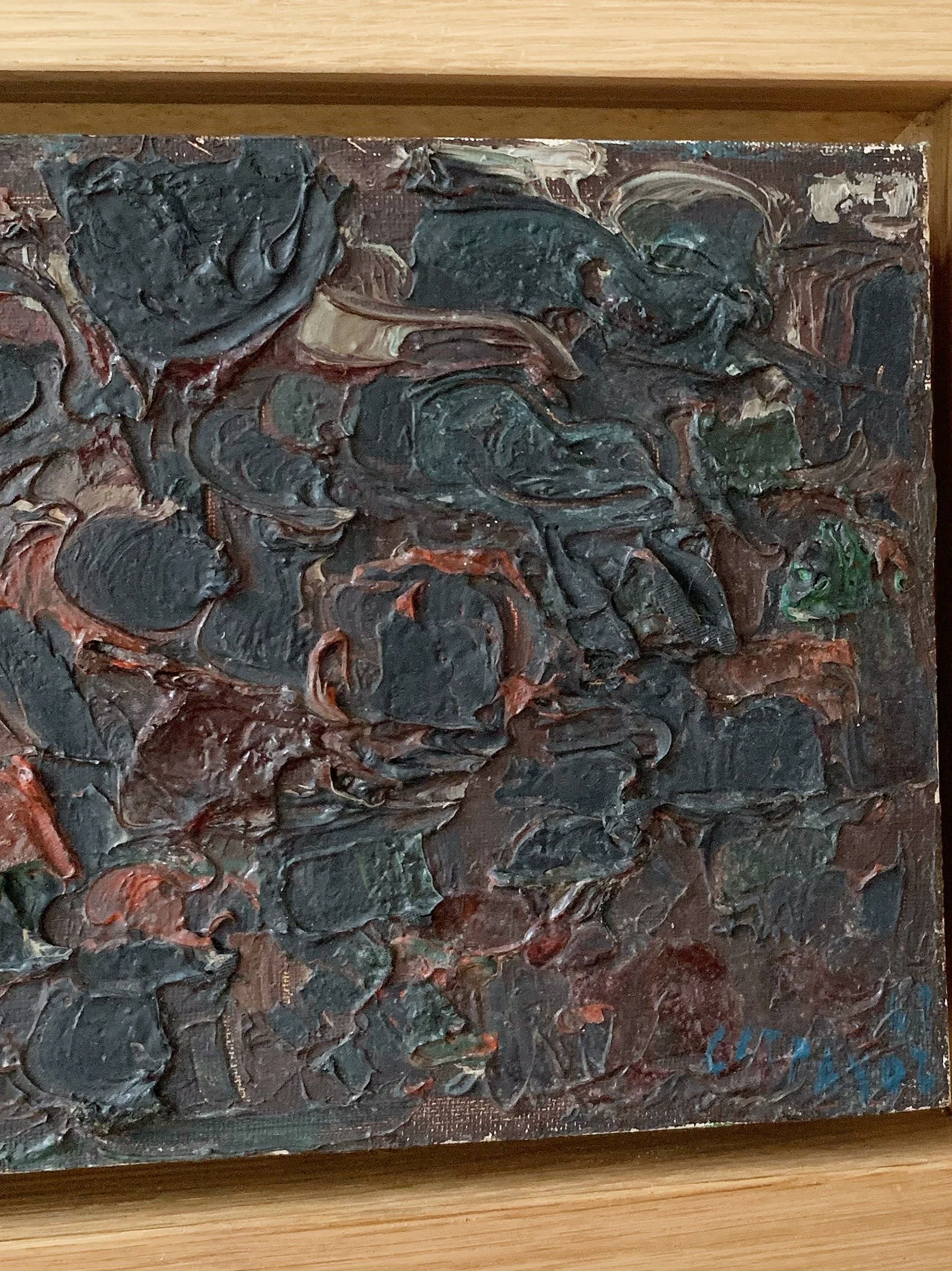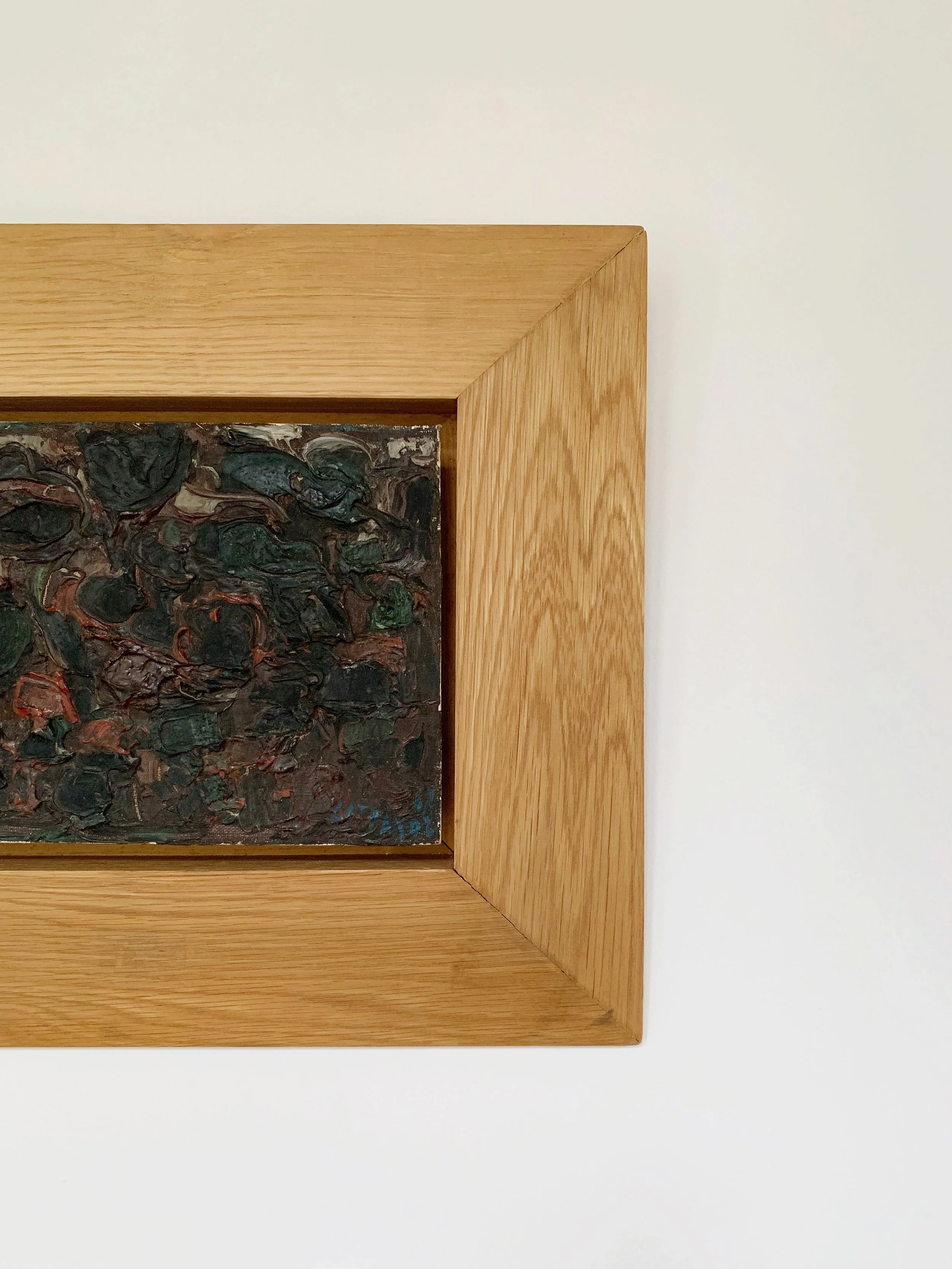André COTTAVOZ (1922-2012)




André COTTAVOZ (1922-2012)
Forêt brulée, 1962
Huile sur carton entoilé
Signé “Cottavoz” et daté “62” en bas à droite
Dimensions de l’oeuvre : 16 x 22 cm
Dimensions du cadre : 26 x 38,5 cm
Provenance : fonds Kriegel
-
Black Forest, 1962
Oil on canvas
Signed "Cottavoz" and dated "62" lower right
Size of the work : 16 x 22 cm
Size of the frame : 26 x 38,5 cm
Provenance : Kriegel fund
Né en 1922 dans l’Isère, André Cottavoz développe un intérêt pour la peinture dès l’adolescence. Encouragé par sa mère, il suit une première formation artistique à l’école des beaux-arts de Lyon qu’il intègre en 1939. En 1942, le jeune artiste est réquisitionné pour le S.T.O. et est déporté en Autriche où il parviendra tout de même à peindre dans des conditions de fortune pour surmonter cette terrible épreuve humaine.
Au lendemain de la Grande Guerre, André Cottavoz reprend le chemin de l’école où il tisse de vrais liens de camaraderie avec les artistes lyonnais de sa génération élèves d’Antoine Chartres que sont Jacques Truphémus, Jean Fusaro ou encore Pierre Coquet. En 1948, sous l’impulsion du peintre Paul Philibert-Charrin, ceux-ci se rassemblent pour présenter leurs travaux dans la chapelle du Lycée Ampère. Il s’agit de l’exposition manifeste de ce groupe de peintres figuratifs qui se qualifient de "sanzistes". André Cottavoz exerce une forte influence sur les sanzistes (ou sans “-istes”) qui doivent ce nom au fait qu'ils ne se revendiquent d’aucun mouvement artistique en s’inscrivant volontairement en marge de tout courant. André Cottavoz expose par ailleurs régulièrement dans divers salons parisiens et obtient le Prix Fénéon en 1953. En 1958, il s’installe dans le Sud de la France, d’abord à Cannes puis à Vallauris.
La touche épaisse et vibrante d’André Cottavoz est reconnaissable entre toutes. Il dépose une matière très épaisse à la surface de la toile qu’il travaille la plupart du temps au couteau. Le résultat rend perceptible le geste de l’artiste qui intervient tel un sculpteur afin d’extraire toute la lumière de cette “pâte picturale”. « Peindre, c’est presque sculpter » déclarait-t-il. Quel que soit le sujet, portrait, paysage ou nature morte, André Cottavoz le réduit à son essence. L'œuvre de 1962 que nous proposons illustre très bien ce propos : l’artiste représente un paysage, celui d’une forêt brûlée réduite à l’essentiel grâce à ce mélange subtil de tons chauds fait de bruns, d’ocre, de gris et de vert sombre, tantôt mates, tantôt brillants, qui éveillent les sens face à ce spectacle subi par la nature.
Collections publiques
Paris, Musée d’art moderne de la ville
Paris, Centre Pompidou, Musée national d’art moderne
Lyon, Musée des beaux-arts
Villefranche-sur-Saône, Musée Paul Dini
Besançon, Musée des beaux-arts et d’archéologie
Puteaux, Fonds national d’art contemporain
Tokyo, Musée d’art moderne
Bibliographie choisie
Sandra Benadretti-Pellard, André Cottavoz, itinéraire intérieur, Paris, Somogy Éditions, 2007.
André Cottavoz, Au fil des heures, propos recueillis par Bertrand Duplessis, Éditions Sanbi, 1993.
Bertrand Duplessis, Cottavoz, Éditions Sanbi, 1991.
Born in 1922 in Isère, André Cottavoz developed an interest in painting as a teenager. Encouraged by his mother, he followed a first artistic training at the School of Fine Arts in Lyon, which he entered in 1939. In 1942, the young artist was requisitioned for the S.T.O. and was deported to Austria where he managed to paint in makeshift conditions to overcome this terrible human ordeal.
After the Great War, André Cottavoz went back to school where he developed real ties of friendship with the Lyonnais artists of his generation, students of Antoine Chartres, such as Jacques Truphémus, Jean Fusaro and Pierre Coquet. In 1948, under the impetus of the painter Paul Philibert-Charrin, they gathered to present their work in the chapel of the Lycée Ampère. It was the manifesto exhibition of this group of figurative painters who called themselves "sanzistes". André Cottavoz exerted a strong influence on the sanzistes (or without "-istes") who owed their name to the fact that they did not claim to belong to any artistic movement and voluntarily set themselves apart from any current. André Cottavoz exhibited regularly in various Parisian salons and was awarded the Prix Fénéon in 1953. In 1958, he moved to the South of France, first to Cannes and then to Vallauris.
André Cottavoz's thick and vibrant touch is recognizable among all. He deposits a very thick material on the surface of the canvas that he works mostly with a knife. The result is a perceptible gesture of the artist who intervenes like a sculptor in order to extract all the light from this "pictorial paste". "Painting is almost like sculpting" he said. Whatever the subject, portrait, landscape or still life, André Cottavoz reduces it to its essence. The 1962 work that we propose illustrates this very well: the artist represents a landscape, that of a burnt forest reduced to the essential thanks to this subtle mixture of warm tones made of browns, ochres, greys and dark greens, sometimes matte, sometimes brilliant, which awaken the senses in front of this spectacle suffered by nature.
